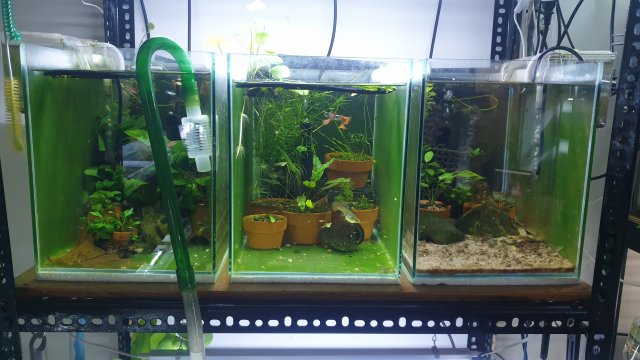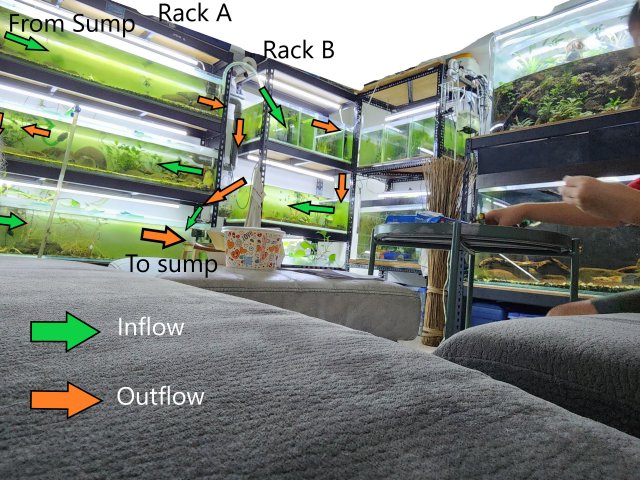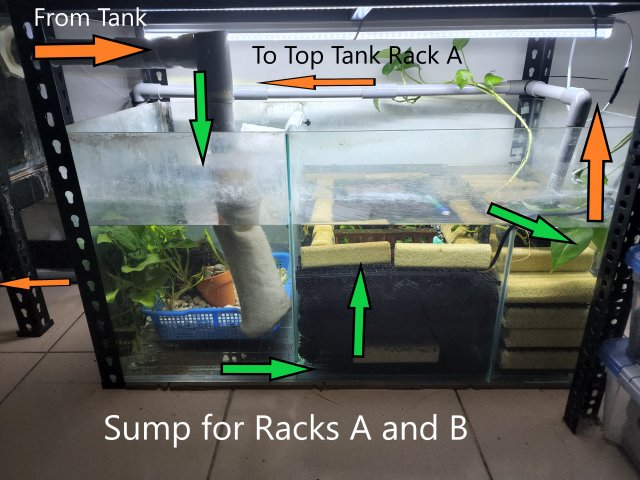Sorry I and just want to make sure I'm understanding what I'm seeing. So those are the tanks for the guppies and the potted plants inside are what you're talking about in comparison to a refugium? Or are those tanks the refugium for larger tanks? How long ago did you start? And what is the green j-hook hose with the strainer? A gravity feed to another tank or is it for water changes?
The plant stocking is fairly minimal. I know it might not seem it considering the tank size and fish stock but the plant is what's doing the work and the less green there is the less machine. The plants need for nutrients is what's causing them to remove nitrogen compounds from the water so they can metabolize them. If they're not provided the appropriate levels of light for the plant(which could be more or less depending on the plant) and in some cases carbon dioxide they won't grow as readily and won't be able to absorb nitrogen. That's why some planted aquariums run injectors.
Different plants have different capabilities when it comes to utilizing nutrients in the water. Like fish can outcompete other fish for food the same is true with plants. For instance algae easily grows in the aquarium with no help necessary from us and can become a nuisance. Algae can also be a plague to planted aquariums as they can outcompete most aquatic plants if conditions aren't ideal causing the algae to start growing on the plants and starving them. Algae scrubbers are a not often utilized but are an effective means of helping maintain low nitrate levels. Given a proper medium to grow on a smaller amount of algae can do the work of a lot of plants. It however can be tedious to maintain as by providing optimal conditions the scrubber can need cleaning more often and scraping it off is not pleasant, but it can be reutilized as food for fish. I believe that's why people utilize some terrestrial plants. Because they can process nutrients on similar levels to algae if not often superior to many of the aquatic plants available to us that we'd want to use in our aquarium and the setup for a something like a hang on back can be infinitely simpler and maintained easier. I'm no expert on this in anyway so take what I say with a grain of salt but I think it's fairly accurate. As I suggested earlier in the thread
Plant only filtration (why not popular in the hobby???) | MonsterFishKeepers.com is a great source of knowledge and experience from people more in the know about this stuff than I.





